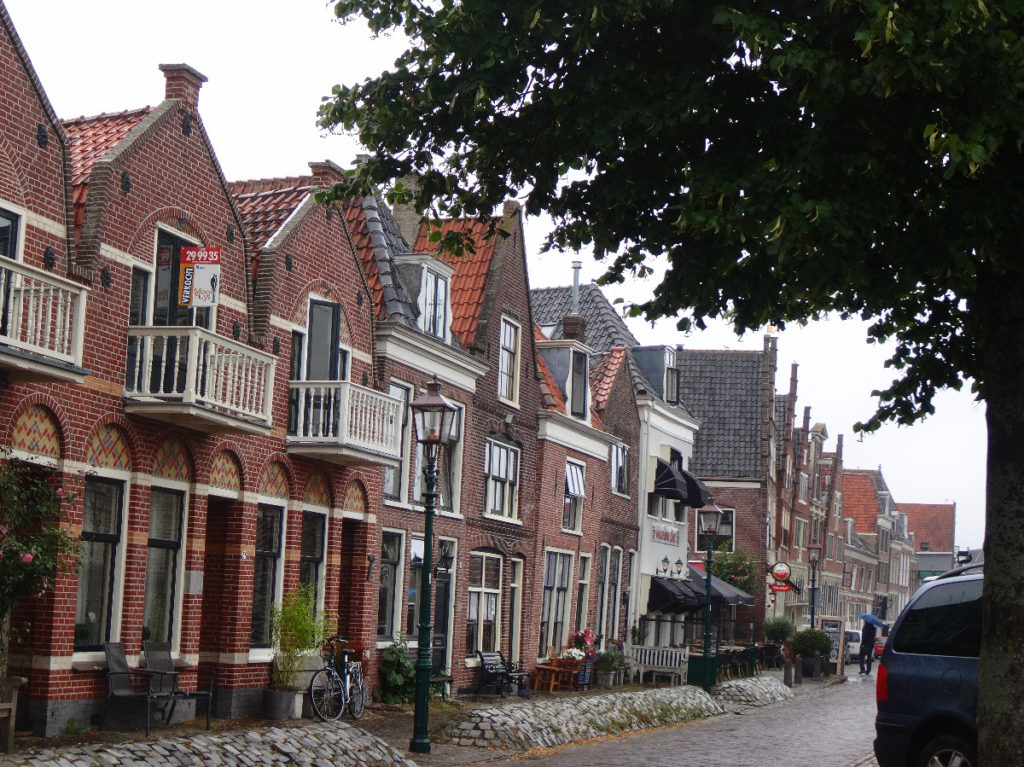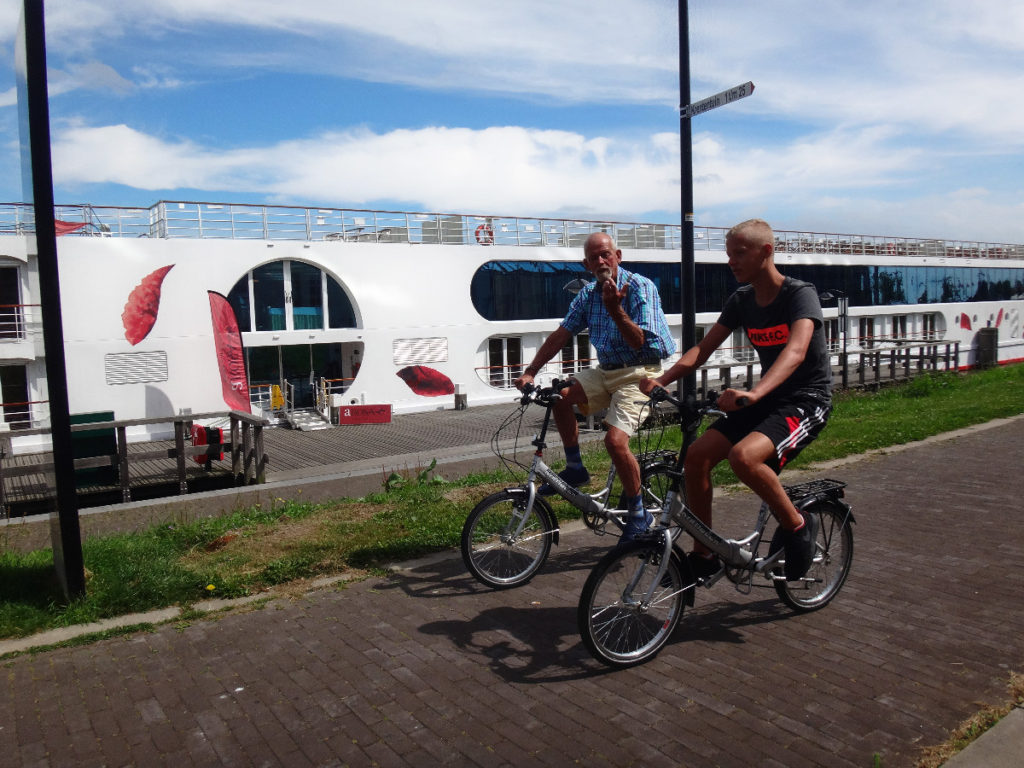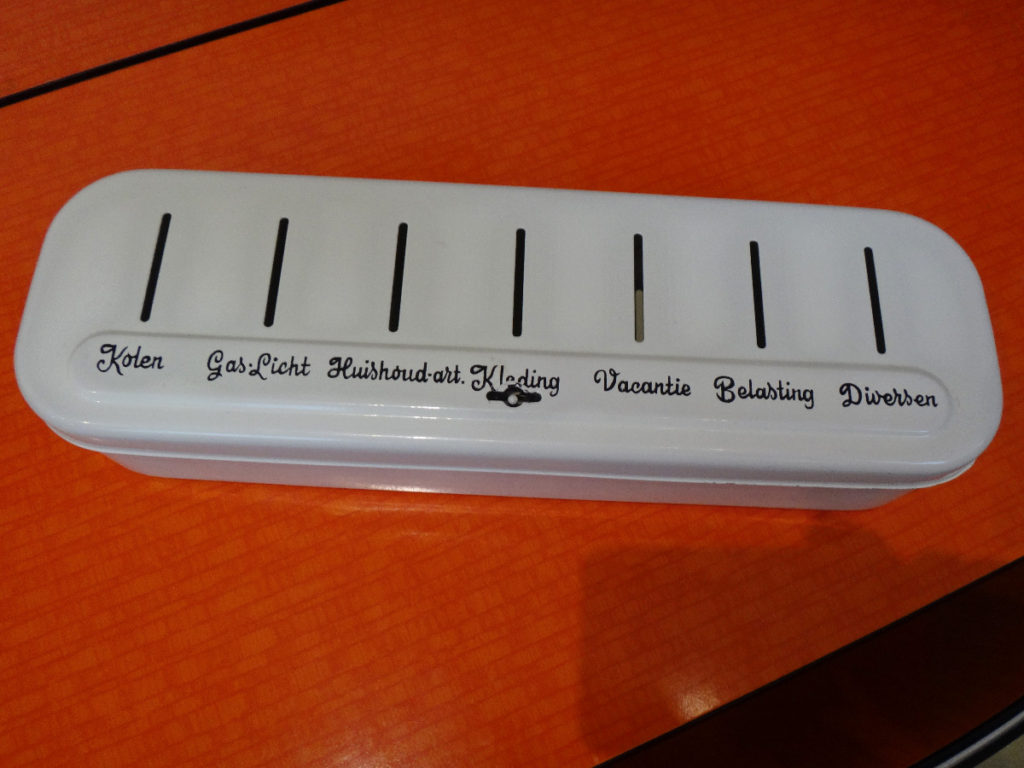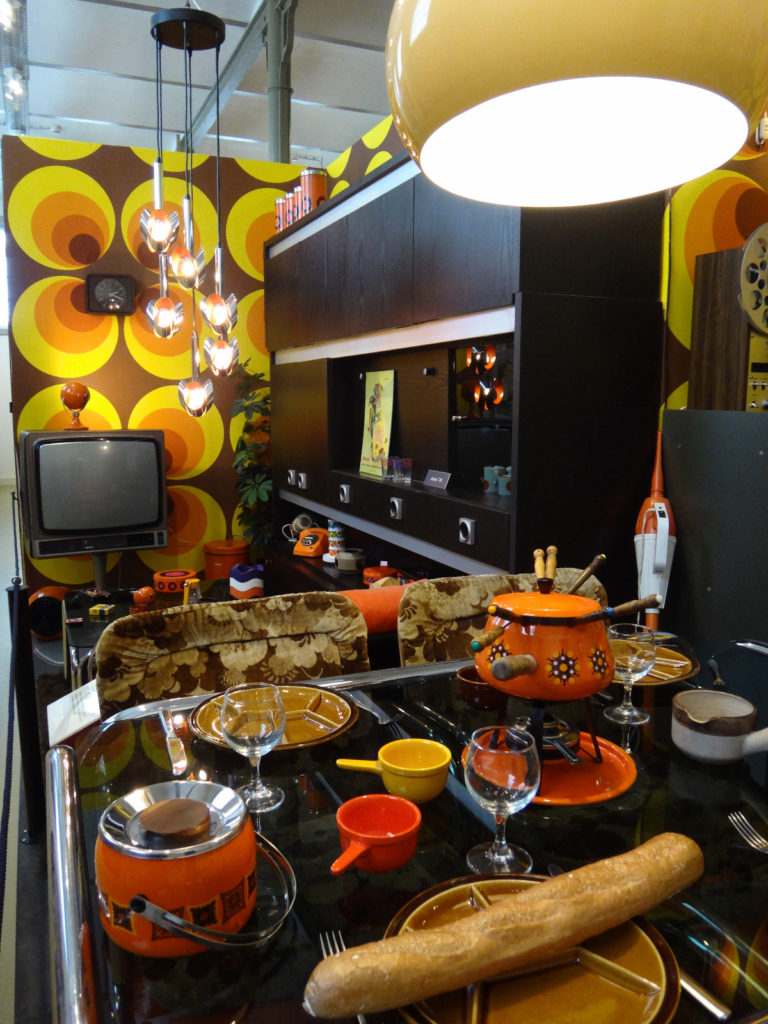The pretty little towns and harbors of The Netherlands are the real magic of the lowlands. Hoorn, founded in 1300, became a VOC (Dutch East India Company) by the 1600’s. “Merchants, traders, seamen, dignitaries and authorities populated the then capital of West-Friesland” (Tourist Brochure, Mooi Hoorn 2016, Toeristisch Magazine). They created a harbor-side city of quaint brick buildings that are now embellished with the iconic Dutch trims and rooftops that let you know in an instant that you are in The Netherlands. It is neat-as-a-pin beautiful.




Because the town is situated next to the water, when our GPS said to go right, it was really telling us to take a swim. Since we didn’t want to sink the car, we headed around the block and tried to find a new way to get to a small quay where we wanted to park. After several long and loopy right turns, we found a parking spot only to be waived off by a woman who said firmly, “No, no, you cannot park here.” Sher showed her our handicapped parking pass and with a large smile she pointed, “this way!” and we drove across a narrow bridge to one of two parking spots. The Dutch make space for the handicapped, but not many. Three cars squeezed into the two spots. But by some kind of GPS luck, we were right next to our destination: The Museum of the 20th Century.

We hopped out and sat down on benches overlooking the scenic marina and a monument to – I think – immigration. As we dug into our hand-packed lunches a fine drizzle began to soak our sandwiches so we headed back to the car and huddled in the front seat as we watched the mist slowly turn into a deluge. Five minutes later, lunch was done, the rain had stopped, and we headed for the museum.


The Museum of the 20th Century is a nostalgic collection of stuff used by the Dutch during the last century. The treasures are gathered into decades to show how technology has impacted family life, as well as into big categories like school or toys or shopping. Walking through the museum was like talking to a favorite granny about “What was life like back in the day?”


Visitors begin their journey through the 20th century by viewing typical rooms of each decade. A good narration on the free audio tour explains how technology freed women of hard manual labor and birth control helped downsize families from about nine children in 1910 to one child in 2000. Interestingly, most technology came to the Netherlands from the United States about 10-15 years after the US.










The museum acknowledges the challenges of two terrible wars during the 20th century which slowed down technological progress in homes. The museum also took a look at a typical shopping street in the early part of the 20th century. Families worked in shops, took a break at lunch time, and re-opened in the afternoon. Interestingly, people still love their small shops and there is no large grocery chain or big box store such as Walmart in the Netherlands. It’s been tried but never caught on.
The Dutch love their children and there was room after room of toys. It was so much fun to see what children played with and how it connected to the toys of my childhood!






There were roomfuls of goodies – TVs, cell phones, appliances and dishes that never made it to the museum displays; they were just grouped under variety and stashed in shelves in rooms. It was fun to wander through these rooms and remember what similar items our families owned when we were growing up.
The beautiful town of Hoorn and the sweet Museum of the 20th Century are well worth the hour drive out of Amsterdam. The slower pace is a healing antidote to the frenzy of Amsterdam and truly soothes the soul.

